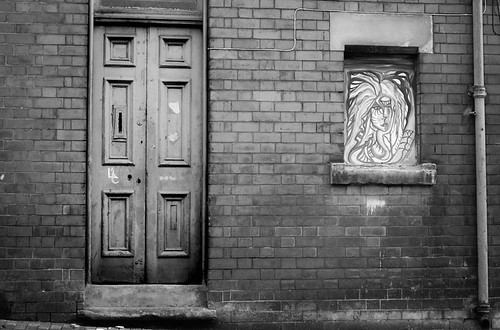Residues F96, Y100B, and F100D of CDR H3 are shown, but, for clarity, are not labeled. As explained over, comparison of the two complexes of Fabs 8066 and 8062 with 3-H reveals the distinctions in the mutual orientations of an antibody and the lengthy axis of the N-HR trimer (Fig. 8B). In addition, binding of 3 Fabs to the exposed N-HR trimer brings about some intrinsic perturbations of its construction. For comparisons of the trimers of N-HR helices we have also used, in addition to the buildings offered right here, the buildings of the identical antibodies complexed to 5-Helix (3MA9 and 3MAC), as effectively as the crystal composition of the 6-helix bundle (six-HB) of gp41 ([24] PDB code 1AIK). The 3-H construct involves an extra isoleucine zipper (IZ) which was added at the N terminus of the N36 sequence of gp41 to encourage formation of a helical trimer [fourteen]. To account  for any potential effect of IZ on the composition of NHR trimer we also incorporated in our comparisons the crystal framework of the 6-HB with a related GCN4 sequence extra to the N terminus ([25] PDB code 1ENV). An total comparison of the gp41 structures clearly indicates that there are little but considerable distinctions between the exposed N-HR trimer structures and individuals in which C-HR helices are current (six-HB or 5-Helix). It is clear from the comparison of the six-HB construction, which contains a GCN4 zipper (1ENV) to the 6-HB that does not have it (1AIK) or to five-Helix, that these variances are not able to be attributed to the influence of the IZ zipper (Fig. 11A). Even so, when the Fab 8062/three-H complicated is in comparison to the Fab 8066/3-H sophisticated, the N-HR trimer in the former sophisticated displays a increased diploma of twist around the three-fold symmetry axis of the trimer (Fig. 11A). As a outcome, the side chains of the N-HR helices in the Fab 8062/three-H sophisticated are much far more displaced from their positions in the six-Helix bundle, when the N-HR trimer structure from 6-HB (1ENV) is utilised as a reference, than in Fab 8066/three-H sophisticated (Fig. 11B). This impact is notably nicely illustrated when we use a morphing method to demonstrate the perturbations in the construction of N-HR trimers in movement (Film S1). In this film, we are using the composition of N-HR trimer from six-HB as a commencing point, and the coordinates of the 548472-68-0 corresponding trimers in the complexes with Fabs 8066 and 8062 as a reference point and a location position, respectively. These outcomes are in great arrangement with the modeling conclusions from our earlier examine [two],
for any potential effect of IZ on the composition of NHR trimer we also incorporated in our comparisons the crystal framework of the 6-HB with a related GCN4 sequence extra to the N terminus ([25] PDB code 1ENV). An total comparison of the gp41 structures clearly indicates that there are little but considerable distinctions between the exposed N-HR trimer structures and individuals in which C-HR helices are current (six-HB or 5-Helix). It is clear from the comparison of the six-HB construction, which contains a GCN4 zipper (1ENV) to the 6-HB that does not have it (1AIK) or to five-Helix, that these variances are not able to be attributed to the influence of the IZ zipper (Fig. 11A). Even so, when the Fab 8062/three-H complicated is in comparison to the Fab 8066/3-H sophisticated, the N-HR trimer in the former sophisticated displays a increased diploma of twist around the three-fold symmetry axis of the trimer (Fig. 11A). As a outcome, the side chains of the N-HR helices in the Fab 8062/three-H sophisticated are much far more displaced from their positions in the six-Helix bundle, when the N-HR trimer structure from 6-HB (1ENV) is utilised as a reference, than in Fab 8066/three-H sophisticated (Fig. 11B). This impact is notably nicely illustrated when we use a morphing method to demonstrate the perturbations in the construction of N-HR trimers in movement (Film S1). In this film, we are using the composition of N-HR trimer from six-HB as a commencing point, and the coordinates of the 548472-68-0 corresponding trimers in the complexes with Fabs 8066 and 8062 as a reference point and a location position, respectively. These outcomes are in great arrangement with the modeling conclusions from our earlier examine [two],
Some information on comparison of the corresponding Fab complexes with 5-Helix and three-H ended up talked about above. For illustration, it was revealed that alignment of the four complexes based mostly on the superposition of 3 N-HR helices demonstrates that the orientation of person Fab molecules toward the long helix of a trimer varies in all of them (Fig. 8C). However, structural differences of the C termini of the helices Na and Nb in five-Helix and three-H are partly owing to the diverse inside structure of the gp41 constructs. In 5-Helix, the C termini of helices Na and Nb are covalently linked to the C-helices that follow them, while in the CCIZN36 they are cost-free. It looks affordable for clarity to different the two sources of the variations in the buildings of the four complexes that are becoming in comparison. The variances in the 9588169binding of two antibodies to the same concentrate on (possibly 3-H or five-Helix) originate from the distinctions in the sequences of their CDRs H2. If we compare the binding of the corresponding Fabs to two diverse gp41 mimetics (3-H and 5Helix) independently, we also observe, that the Fab b-sheet framework in the Fab/3-H trimer complexes is positioned otherwise in relation to the 3-fold axis of symmetry of the trimer compared to the Fab/5-Helix complexes (Fig. 12).